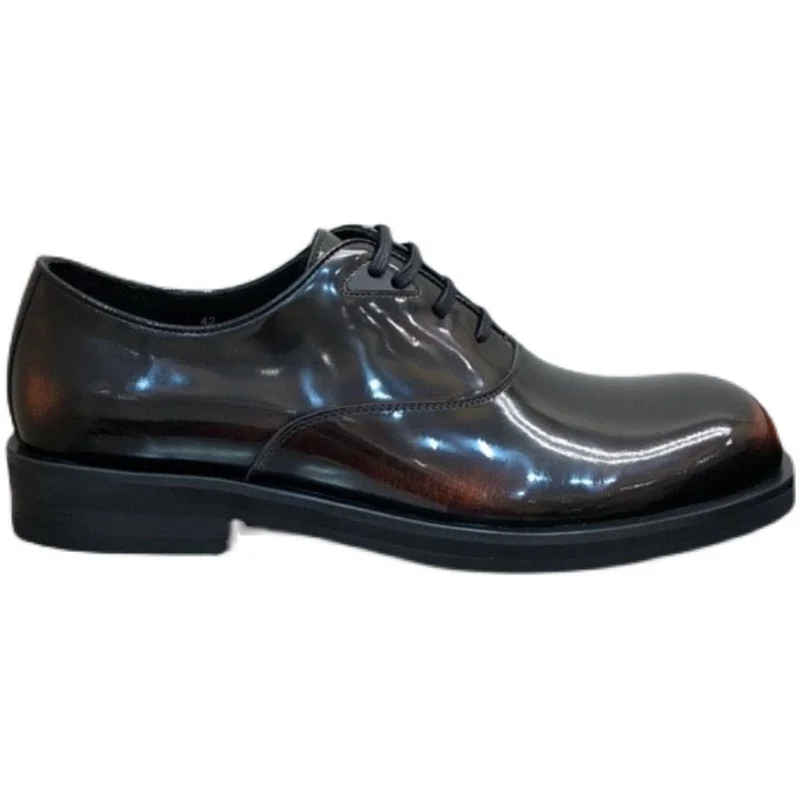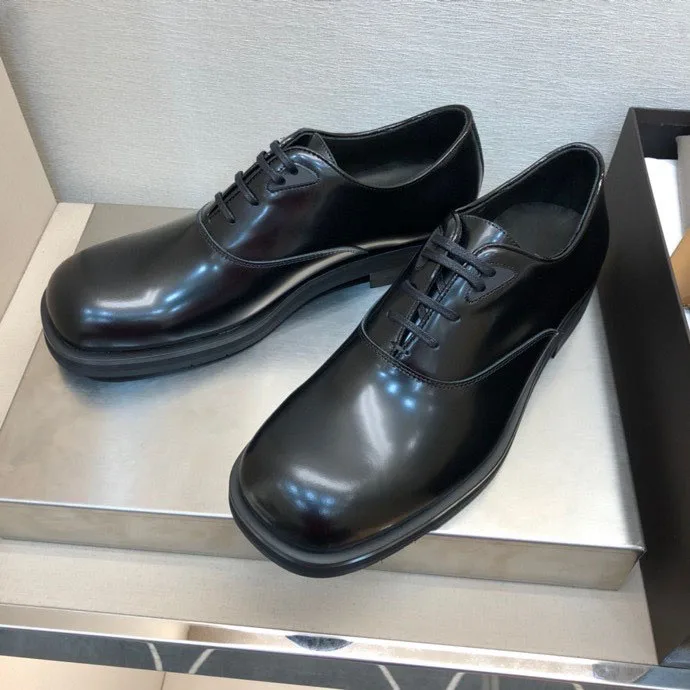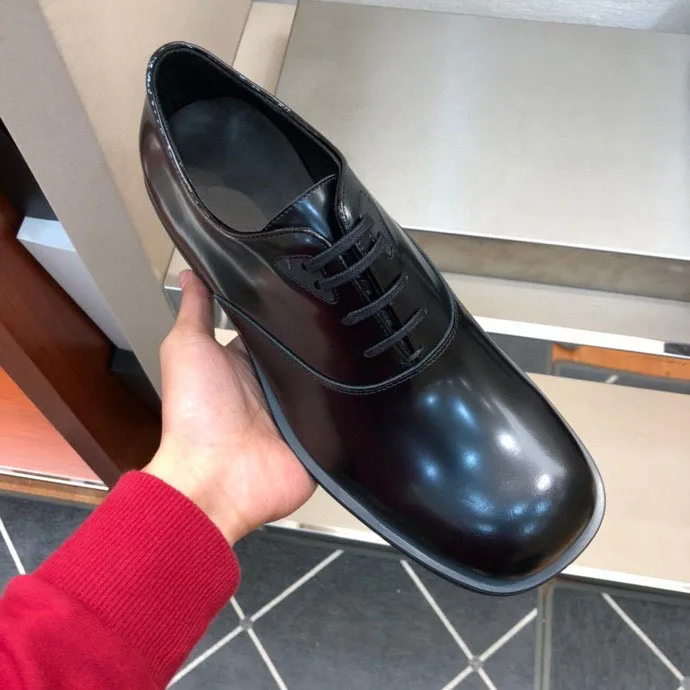Introduction to Stretching Leather Shoes
Leather shoes are a timeless addition to any wardrobe. They combine elegance, durability, and superior comfort. However, even the best leather shoes can feel tight initially. This can lead to discomfort and even foot pain. Stretching leather shoes is a practical solution to ensure they fit perfectly. This comprehensive guide will explore various methods and tips for effectively stretching your leather shoes, enhancing comfort, and extending their lifespan.

Why Stretch Leather Shoes?
Stretching leather shoes offers several benefits. First and foremost, it enhances comfort. Tight shoes can cause blisters, bunions, and other foot issues. Stretching them ensures a snug, comfortable fit. Secondly, stretching leather shoes can extend their lifespan. Shoes that fit well tend to wear evenly, reducing the risk of damage. Additionally, stretching helps accommodate any changes in your foot size or shape over time. Investing a little effort in stretching your leather shoes can greatly improve your wearing experience and preserve your shoes.
History and Evolution of Leather Shoe Stretching
The practice of stretching leather shoes is as old as shoe-making itself. From ancient techniques to modern innovations, stretching leather shoes has evolved significantly.
Early Days of Leather Shoe Stretching
In ancient times, leather shoes were often handmade and could be customized to fit the wearer’s feet. However, adjustments were still needed to ensure a perfect fit. Early methods included soaking the leather in water to make it more pliable and then wearing the shoes while they dried. This technique was straightforward but effective, providing a custom fit.
Middle Ages to Renaissance
During the Middle Ages and Renaissance periods, craftsmanship improved, and more sophisticated methods of stretching leather shoes were developed. Cobblers would use specialized tools to stretch the leather, ensuring a more precise fit. The use of wooden shoe forms, or lasts, became common. These forms were placed inside the shoes to gently stretch the leather over time.
Modern Innovations
Today, stretching leather shoes blends traditional craftsmanship with modern technology. Commercial shoe stretchers, sprays, and other tools have made the process more convenient and effective. Advances in materials and design have also improved the functionality and durability of these stretching tools. Whether you prefer DIY methods or professional services, there are numerous options available to achieve a perfect fit.
Increasing Popularity
The popularity of stretching leather shoes continues to grow. As people invest in high-quality footwear, they seek ways to ensure maximum comfort and durability. The availability of affordable and effective stretching tools has made this practice more accessible. Whether for fashion or comfort, more individuals are turning to leather shoe stretching to enhance their footwear experience.
Different Methods to Stretch Leather Shoes
There are various methods to stretch leather shoes, each catering to different needs and preferences. Understanding these methods can help you choose the best approach for your shoes.
Using Stretching Sprays
Stretching sprays are a popular choice for softening leather and making it more pliable.
Features
Stretching sprays are formulated to penetrate the leather, softening it without causing damage. They are easy to apply and can be used in conjunction with other stretching methods.
Pros and Cons
Stretching sprays offer a straightforward and effective way to stretch leather shoes. They can be used on specific areas or the entire shoe. However, they may not be as effective for significantly tight shoes. It’s essential to use a quality spray designed for leather to avoid damage.
Using Shoe Stretchers
Shoe stretchers are specialized tools designed to stretch the entire shoe or specific areas.
Features
Shoe stretchers come in various designs, including two-way and one-way models. They feature adjustable components to stretch the shoe lengthwise, widthwise, or both. Some models include attachments for targeting specific areas, such as bunions or high insteps.
Pros and Cons
Shoe stretchers provide a precise and effective way to stretch leather shoes. They are ideal for addressing overall tightness or specific pressure points. However, they may require a learning curve to use effectively. Investing in a high-quality shoe stretcher ensures better results and durability.
Wearing Shoes with Thick Socks
Wearing shoes with thick socks is a simple and cost-effective method for stretching leather shoes.
Features
This method involves wearing a pair of thick socks and then putting on the shoes. The additional bulk of the socks helps stretch the leather as you wear the shoes.
Pros and Cons
Wearing shoes with thick socks is an easy and accessible method. It allows you to gently stretch the shoes while getting used to them. However, it may take several sessions to achieve the desired fit. This method may also be less effective for severe tightness.

Using Heat
Applying heat is another effective method for stretching leather shoes. Heat softens the leather, making it more pliable.
Features
This method involves using a hairdryer or heat gun to warm the leather. The shoes are then worn while still warm, allowing the leather to stretch and mold to your feet.
Pros and Cons
Using heat is a quick and effective way to stretch leather shoes. It works well for specific areas or the entire shoe. However, it carries the risk of damaging the leather if not done correctly. It’s essential to use moderate heat and avoid prolonged exposure.
Professional Stretching Services
Professional stretching services offer a convenient and effective solution for stretching leather shoes.
Features
Professional cobblers use specialized equipment and techniques to stretch leather shoes. They can address specific issues and ensure a precise fit.
Pros and Cons
Professional stretching services provide reliable and often superior results. They are ideal for high-quality or expensive shoes that require expert care. However, they come at a cost and may require you to leave your shoes at the shop for a few days.
How to Stretch Leather Shoes at Home
Stretching leather shoes at home is a practical and cost-effective solution. Following proper techniques ensures effective and safe stretching.
Preparing Your Shoes
Preparation is key to successful stretching. Ensure your shoes are clean and ready for the process.
Cleaning
Start by cleaning your shoes. Use a damp cloth or a leather cleaner to remove dirt and dust. This ensures the stretching tools and sprays can penetrate the leather effectively.
Applying Stretching Spray
If using a stretching spray, apply it to the areas that need stretching. Ensure the leather is dampened but not soaked. Follow the manufacturer’s instructions for best results.
Using Shoe Stretchers
Shoe stretchers offer a precise and effective way to stretch leather shoes. Follow these steps for optimal results.
Inserting the Stretcher
Insert the shoe stretcher into the shoe. Ensure it is properly positioned and the components are adjusted to match the area needing stretching.
Adjusting the Stretcher
Turn the handle to expand the stretcher. Increase the tension gradually to avoid over-stretching or damaging the leather. Leave the stretcher in place for at least 24 hours.
Checking the Fit
Remove the stretcher and try on the shoes. Check the fit and comfort. Repeat the process if additional stretching is needed.
Using Thick Socks
Wearing thick socks is another simple method for stretching leather shoes. Follow these steps for effective stretching.
Choosing the Right Socks
Select a pair of thick, cushioned socks. The thicker the socks, the more effective the stretching.
Wearing the Shoes
Put on the thick socks and then wear the shoes. Walk around for at least 30 minutes to stretch the leather. Repeat the process over several days if needed.
Using Heat
Applying heat can effectively stretch leather shoes. Follow these steps for safe and effective stretching.
Warming the Leather
Using a hairdryer, warm the leather on the tight areas. Keep the hairdryer moving to avoid overheating any one spot. The leather should be warm but not hot.
Wearing the Shoes
While the leather is still warm, put on the shoes and walk around. The heat will make the leather more pliable, allowing it to stretch and mold to your feet. Repeat the process if necessary.
Proper Maintenance After Stretching
Proper maintenance ensures the longevity and comfort of your stretched leather shoes. Follow these tips to keep them in top condition.
Regular Cleaning and Conditioning
Regular cleaning and conditioning are essential for maintaining the softness and durability of the leather.
Cleaning Tips
Use a damp cloth or leather cleaner to remove dirt and dust. Clean your shoes regularly to prevent dirt build-up. Avoid using harsh chemicals that can damage the leather.
Conditioning Tips
Use a quality leather conditioner to keep the leather soft and supple. Apply it sparingly and rub it in with a soft cloth. Let it dry, and then buff with a clean cloth. Conditioning prevents the leather from drying out and cracking.

Storing Your Shoes
Proper storage helps maintain the shape and condition of your stretched leather shoes.
Storage Tips
Store your shoes in a cool, dry place. Use shoe trees to maintain their shape. Avoid direct sunlight and high humidity. Store them in dust bags or boxes to protect them from dust and damage.
Regular Wear and Inspection
Regular wear and inspection help maintain the fit and condition of your stretched leather shoes.
Wearing Tips
Wear your stretched leather shoes regularly to keep them stretched and comfortable. Alternate between different pairs to prevent wear and tear on a single pair.
Inspection Tips
Regularly inspect your shoes for signs of wear or damage. Check the soles, stitching, and leather condition. Address any issues promptly to prevent further damage.
Common Problems and Solutions
Stretching leather shoes can present challenges. Knowing how to address common problems ensures effective and safe stretching.
Overstretching
Overstretching can cause the shoes to become too loose.
Solution
Avoid over-stretching by gradually increasing the tension or wear time. Perform the stretching process in stages, checking the fit after each stage. If over-stretching occurs, consider using an insole or heel pad to improve the fit.
Uneven Stretching
Uneven stretching can cause discomfort and affect the shoe’s fit.
Solution
Ensure the stretching tools or methods are evenly applied. Use professional services for precise stretching if needed. Regularly check the fit and adjust the stretching process as needed.
Damage to the Leather
Improper stretching can damage the leather.
Solution
Follow proper techniques and use appropriate tools. Gradually increase the tension or temperature to avoid over-stretching or overheating. Use quality products designed for leather to prevent damage.
Persistent Tightness
In some cases, persistent tightness may be difficult to resolve.
Solution
Consider using multiple methods or professional services for effective stretching. Address any underlying issues, such as foot shape or size, that may be contributing to the tightness.
Final Thoughts
Stretching leather shoes offers a blend of comfort, fit, and durability. Understanding the different methods and following proper techniques ensures effective and safe stretching. Proper maintenance extends the life and comfort of your stretched leather shoes. With continuous innovation, the future looks bright for this essential shoe care practice. Investing in quality tools and products is investing in your comfort and shoe longevity. Make a wise choice and enjoy the benefits of perfectly fitting and comfortable leather shoes. Elevate your wearing experience and embrace the art of stretching leather shoes for a better fit and enhanced comfort.